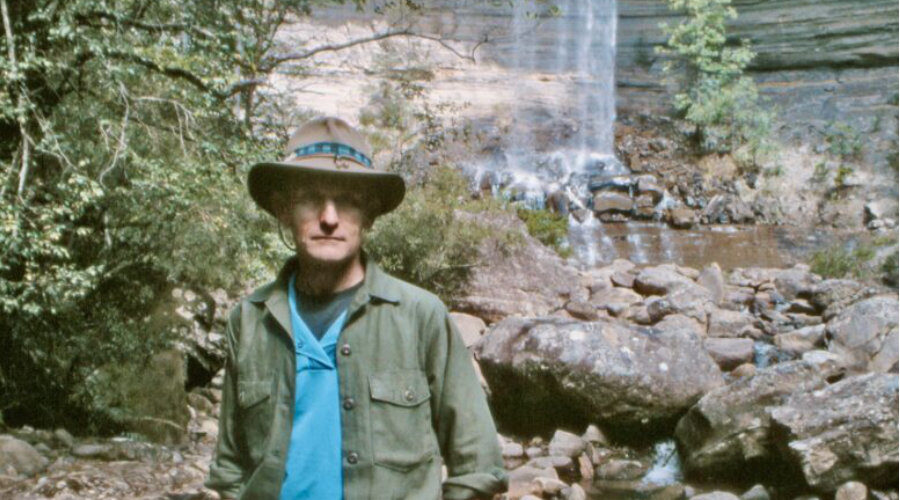By the falls
Memoir: An overnight trek when I was assistant instructor on a bush guiding course.
Down. Down I go, ignoring the ‘track closed’ sign. I should catch them up just after they arrive, I estimate.
Why the track was closed was anybody’s guess. I thought it might have collapsed as it is steep and narrow where it descends the sandstone cliff that takes you down from the tops into the forest and the valley deep below. I make good time walking alone, as I always do, and join the track the group would have followed from their more-distant start point. They would be past here by now, I guesstimate, as I set off roughly northwest along the track that follows the river. Up and down go the undulations of the land here in the valley bottom below the tree canopy, and here and there I catch a glimpse of the sheer orange-yellow sandstone cliffs on the other side of the river that confine the stream to its narrow passage. Time passes although I don’t know how much, and then there they are just having arrived at the campsite. Blue Gum Forest. The Blue Mountains, NSW.

I started out later than the party, which is why I took the short cut down the cliff face to intersect the main track. The group is made up of students doing the TAFE Advanced Certificate in Outdoor Guiding. The instructor is a very experienced bushwalker, a woman in middle age who has a soft and friendly personality that overlays a stoic and tough character that you find in bushwalkers who have put in years on long trips along far trails through the wild. She hired me to assist on the course after I plotted a route for the group over a ridge to a lake over on the far side in a national park in southern NSW.
The forest is an extensive stand of tall and straight-trunked blue gums, a gift to the people from the bushwalkers of decades ago who save it from logging. With glossy bark of light grey, the gums create an imposing environment with little by way of understorey. They occupy the flatter land along the river, the orange sandstone cliffs rising vertically either side.
The day is warm, the sky clear. In the forest the students doff their packs. We go about putting up tents. On this and on another walk with the group I bring only a large day pack for the minimal kit I carry. There is a freedom to travelling minimal and light in rough country. A light pack, though packed with all the essentials and nothing more, makes for far and fast travel.
I take out my hoochie (a tarp shelter used in the army), pass the cord through the loops along the centre line and tie the line to two trees opposite. The corners I tie to pegs I push into the ground. Groundsheet and sleeping bag spread below, and there is camp set up. The forest offers shelter from rain and rough weather so a hoochie is all I need although it does nothing to keep out the creepy crawlies.
The rest of the afternoon we spend sitting around camp or on the big rock outcrop over the river, talking and teaching in our informal way. A small cooking fire is lit as day starts to fade to that liminal time between light and dark when the sky is still bright but the sun is hidden below the high cliffs which spread their shadow over the forest. Night comes, and with it talk is subdued.
We sit around in the glow of the fire as darkness seeps through the forest to conceal all beyond the feeble orange glow of our fire. It is a small fire as we teach the adage about ‘the bigger the fire the bigger the fool’. Quietness settles. Then it is into tents or, for me, under the hoochie. I zip closed my sleeping bag. My pack doubles as pillow. The night is dark and mild.
We will walk out in the late morning. At some point we take a side track to reach the base of a waterfall that spills from the high cliff above. Someone—who was it?— takes a photo of me.

